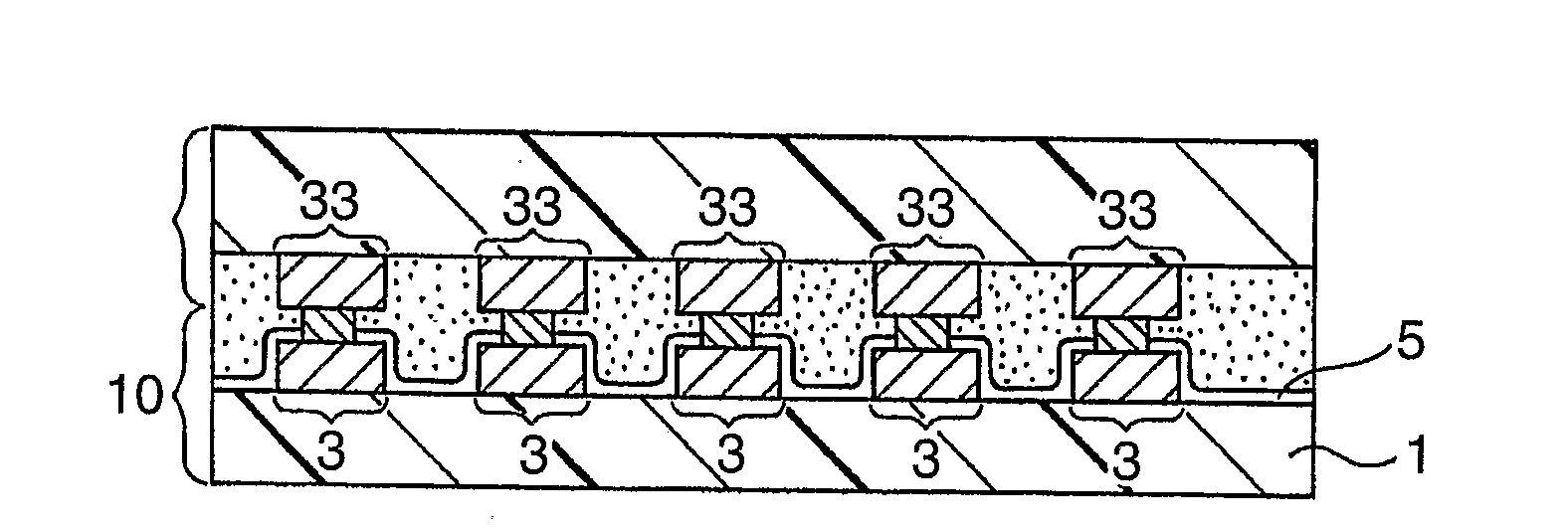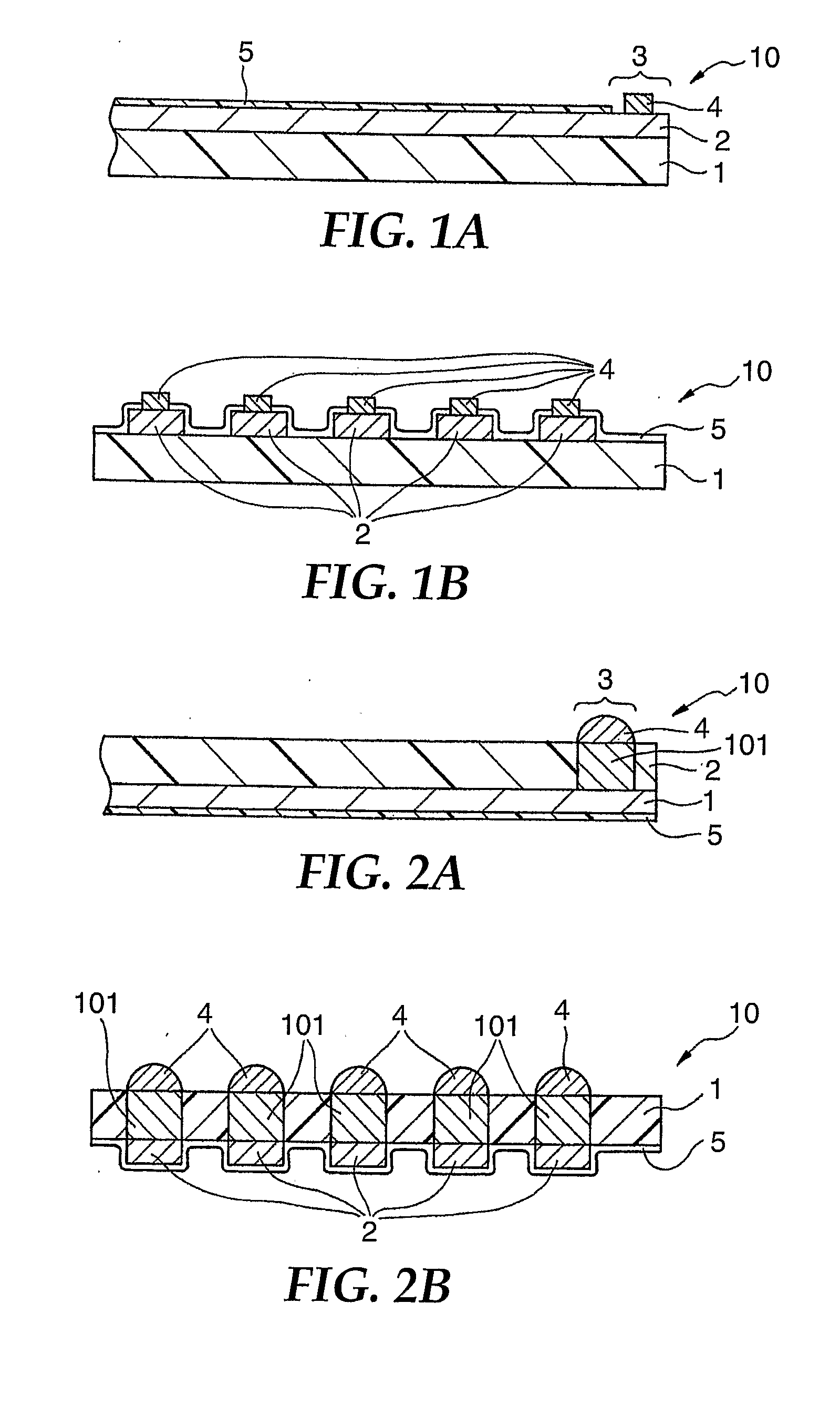Method for Connecting Printed Circuit Board
a technology of printed circuit board and connection plate, which is applied in the direction of printed circuit aspects, non-metallic protective coating applications, adhesive types, etc., can solve the problems of less physical strength of solder connection portions of fine pitches, less connection stability, and increased likelihood of short-circuit with adjacent connection portions, so as to improve the high temperature characteristics of thermosetting adhesive composition, improve the effect of chemical resistance and relatively mild setting process
- Summary
- Abstract
- Description
- Claims
- Application Information
AI Technical Summary
Benefits of technology
Problems solved by technology
Method used
Image
Examples
example 1
[0052]An FPC equipped with a bump structure that has a construction shown in FIG. 1 is prepared. More concretely, the FPC has a construction in which each copper bump 4 is formed by plating on a connection portion 3 (land) at the distal end of a wire 2 (thickness: 15 μm, width 36 μm) formed of a copper lead on a resin film 1 (25 μm thick) formed of polyimide, and the surface of the bump is plated with gold (Au). The bump 4 has a width of 36 μm, a length of 60 μm, and a height of 15 μm.
[0053]The same FPC as described above with the exception that the bump is not formed is used as the second wiring board to which the FPC is to be connected.
[0054]The adhesive film is obtained by forming a liquid composition tabulated in Table 2, coating the liquid composition on a polyethylene terephthalate (PET) film the PET film having been release treated with silicone and drying the film at 100° C. for 30 minutes to a thickness of 25 μm.
[0055]The adhesive film is put on the FPC equipped with the bu...
PUM
| Property | Measurement | Unit |
|---|---|---|
| height | aaaaa | aaaaa |
| length | aaaaa | aaaaa |
| length | aaaaa | aaaaa |
Abstract
Description
Claims
Application Information
 Login to View More
Login to View More - R&D
- Intellectual Property
- Life Sciences
- Materials
- Tech Scout
- Unparalleled Data Quality
- Higher Quality Content
- 60% Fewer Hallucinations
Browse by: Latest US Patents, China's latest patents, Technical Efficacy Thesaurus, Application Domain, Technology Topic, Popular Technical Reports.
© 2025 PatSnap. All rights reserved.Legal|Privacy policy|Modern Slavery Act Transparency Statement|Sitemap|About US| Contact US: help@patsnap.com



